- Home
- Alison Weir
Henry VIII Page 10
Henry VIII Read online
Page 10
Good work practices and conduct were constantly reinforced. Both the King and his Household officers demanded a high standard of service. Servants were to be unobtrusive when in attendance on the monarch, and under no circumstances were they to scratch themselves, pick their noses, blow those noses on their sleeves, spit, belch, “claw their cods,” or breathe stinking breath over their master.20 Discretion was mandatory: upon taking up a post, every member of the household, of whatever rank, had to take an oath swearing loyalty to the King and promising not to work for anyone else and to carry out his or her duties faithfully and diligently.21
Henry himself, with his eagle eye for detail, was a stickler for punctuality. If he gave a courtier leave of absence, he expected him back by a set time, and woe betide anyone who was late. The Clerks Comptroller of the Board of the Greencloth maintained “establishment lists” of servants and their duties on rolls of parchment, and they would check every day to see that no one was absent and that all persons were where they should be; a servant could take leave only with the prior permission of one of the White Sticks. Wages were docked for unauthorised absences. The same lists were used to check whether unauthorised persons were working in the Household. If any was found, the Serjeant at the head of that department would be penalised with the loss of two days’ wages if he did not immediately expel the interloper.22 The Board also prepared an “ordinary” listing those persons entitled to bouche of court.23
Early in the reign, the poet Andrew Barclay visited court and came to the conclusion that Henry VIII’s servants were underoccupied and lazy:
They have no labour, yet are they well beseen,
Bearded and guarded in pleasant white and green.
Some were also careless, quarrelsome, dishonest, dirty, and surly. 24
Barclay evidently spent a night in one of the common sleeping chambers, and was appalled by the behaviour of the occupants:
It is great sorrow for to abide their shout,
Some fart, some flingeth, and other snort and rout;
Some buck and some babble, some cometh drunk to bed,
Some brawl and some jangle, when they be beastly fed;
Some laugh and some cry, each man will have his will,
Some spew and some piss, not one of them is still.
Never be they still till middle of the night,
And then some brawleth, and for their beds fight.
The Household Ordinances make it clear that stealing was rife, yet few offenders were ever caught. Those serving at table were not allowed to wear cloaks in case they were to smuggle out food beneath them.25 The Eltham Ordinances of 1526 forbade courtiers and servants to “despoil commodities in gentlemen’s houses” when the court was on progress, “because it is often daily seen that, as well in the King’s own houses, as in the places of other noblemen and gentlemen, locks, tables, forms, cupboards, trestles and other household implements be purloined and taken away, to the King’s great dishonour.”26 Even the nobly born, it appears, were no respecters of property.
The Board of the Greencloth, which was to be found in the Counting House, was the chief governing body of the Household. It was so called because its officers sat around a table, or board, covered with a green baize tablecloth. Since the reign of Edward IV, the Board had maintained “the worship and welfare of the whole household,”27 and it had its own coat of arms depicting a key and a white rod on a green background. At Hampton Court, the Counting House was housed in the room directly above the entrance to the service complex, which is to the left as one faces the main gatehouse; its windows afforded a good view of the comings and goings in the court below. Similar arrangements were in place at other palaces.
The Board of the Greencloth was responsible for administration, finance, personnel, discipline, and provisioning.28 At least one of the White Sticks had to be present at the Board’s daily meetings, with two or three Clerks of the Greencloth who assisted them.29
Much of the work was done by the Cofferer—under Henry VIII, this office was first held by John Shurley—who received money allocated to the Household, issued advances to purveyors, settled their accounts, and paid out wages. He had to keep weekly records of expenditure, based on daily figures supplied by the Serjeants of the various departments, and make quarterly returns. It was the job of the Clerks to visit the larders and kitchens daily and check the stores.
Henry VIII had to dig deep into the wealth left by his father in order to finance his court and household and maintain the degree of magnificence appropriate to his position as king. Before long, his inheritance was spent. The annual revenues of the Crown remained stable, thanks to fixed rents and dues, at about £100,000 (£30 million) throughout the reign. Consequently, rampant inflation and rising prices caused by Henry’s wars and the demands of a growing population made inroads into the royal finances. Out of their income, Tudor monarchs had to fund all the expenses of government and administration, yet throughout the period the cost of maintaining the court was enormous, amounting to about one-third of the royal income. That there was no criticism of this underlines the unquestioning acceptance of the majestas of the sovereign.
The King sought to solve his financial problems by twice devaluing the coinage (in 1526 and 1539), by borrowing, and by purchasing property in order to increase his income from rents. Both Wolsey and Cromwell brought in measures to reduce wastefulness in the royal household, but to little avail. Henry died in debt.
The Chamber had two financial departments. The Treasury of the Chamber had originally been a chest containing money for the King’s private use, but by the time of Henry VIII it had become an important financial department receiving the bulk of the royal revenues and funding many of the King’s wide-ranging interests and commitments, such as state affairs, tournaments, wages, tips, gambling debts, and offerings at shrines. The Treasurer of the Chamber, initially Sir John Heron, was in charge of these funds.30 The King’s Privy Purse, which was equally important, if not more so, was held by the Groom of the Stool, who was head of the Privy Chamber; its funds were used for royal enterprises such as maintaining palaces or purchasing plate, jewels, and tapestries.31
The third financial department of the court was the Great Wardrobe, which had been its chief treasury since the fourteenth century. In 1445, it had been established at Baynard’s Castle in London, where were stored furnishings, fabrics, clothing, liveries, and the finery needed for ceremonial occasions. The Keeper of the Wardrobe was responsible for purchasing these items, keeping them in repair, and issuing them to the court when needed. The Offices of the Revels and the Tents came under his jurisdiction.
Security was somewhat lax at court. The King was an exalted being, but he remained very accessible to his subjects. Renaissance monarchs were supposed to be highly visible, and this often precluded taking strict security measures. Yet certain precautions were in place.
Entry to the court was controlled by the Serjeant Porter, who kept watch at the service gate for unauthorised persons or servants attempting to smuggle out stolen goods or provisions. He and his staff searched the palace three or four times a day to make sure that no “vagabonds, rascals or boys” had slipped in unnoticed.32 The Porter carried a staff of office, signifying his authority, and was provided with a small pair of stocks in which to restrain offenders.33 He himself could lose wages or be fined if he was lax in his duties.
The Yeomen of the Guard, armed with fearsome gilt halberds, swords, and silver breastplates, were lined up along the walls of the Great Watching Chamber, guarding the entrance to the royal apartments around the clock. Founded in 1485 by Henry VII, the Yeomen of the Guard were the sovereign’s permanent personal bodyguard, under the command of their Captain (who, under Henry VIII, was the Vice Chamberlain, Sir Henry Marney), and responsible for keeping the King safe at all times. They were of yeoman birth, and had to be “good archers, hardy, strong and of agility.”34 Most were chosen for their size and strength: “They were all very handsome, and by God, they were
like giants!” exclaimed a Venetian envoy in 1515. 35 Wherever the King went, they lined the way. During the Field of Cloth of Gold, when he approached, they cleared the crowds “by force. Drawn up in broad ranks on this side and that, the glittering guard of King Henry makes a wide path, 200 halberd-bearers in all, gleaming with gold.” 36
In time of war, the Yeomen of the Guard were divided into two sections, archers and mounted halberdiers. Their numbers fluctuated: Henry VIII increased the Guard from 300 to 600 for his French campaign of 1513; in 1526, their numbers, which had fallen to about 200, were reduced to 100. By 1547, there were 150 of them.37 Twelve members of the Yeomen of the Guard were permanently stationed at the Tower of London, and were called Tower Warders (the name Beefeaters does not occur until the seventeenth century).
The earliest picture of a Yeoman of the Guard appears on an Anglo-French treaty of 1527:38 he wears the original green-and-white-striped velvet tunic39 embroidered back and front with the crowned Tudor rose “with spangles of silver and gilt” and goldsmiths’ work. 40 Each guard had three changes of livery: one for state occasions (as just described), a similar everyday livery made of cheaper cloth, and a “russet” livery, which may have been worn for the night watches. The famous scarlet livery was first introduced in 1514, and replaced the green and white tunics around 1530.41
In 1509, Henry VIII instituted another troop of royal guards, the Band of Gentlemen Pensioners or “Gentlemen of the Spears,” a mounted bodyguard, armed with spears and lances, whose duty it was to look to his safety on the field of battle, at court, and on ceremonial occasions. The King seems to have copied this idea from Louis XI of France, who in 1474 had founded the “Gentilhommes de l’Hotel du Roy ou Pensionnaires.”42 Unlike the Yeomen of the Guard, who were cheaper to maintain but not so prestigious, the fifty Gentlemen Pensioners were of aristocratic birth; they were highly paid,43 better armed, with swords, halberds, battle-axes, and poleaxes, and had to provide three servants each. They wore the fine clothes of gentlemen; the chronicler Edward Hall once saw them dressed in cloth of gold and mounted on horses caparisoned with the same. Full training was given to recruits as yet “unexercised in the feat of arms.”44 Their first captain was Henry Bourchier, Earl of Essex, and their first lieutenant Sir John Pechy.
Every door in the King’s apartments was fitted with a lock made by the royal locksmith, Henry Romains.45 The King himself held one master key, and an appointed officer another. The Groom of the Stool, as head of the Privy Chamber, held a full set. There were two locks on the door of the wine cellar, and on the door of the room at Hampton Court where the King stored his paintings.46 The Queen held her own privy keys. Occasionally, Romains was ordered to change all the royal locks. 47 When Henry went on progress, he took with him a portable lock for his bedchamber door, and Romains went, too, to fit it. One such lock survives; originally at Beddington Park, it is now in the Victoria and Albert Museum, and bears the royal arms and a Tudor rose; a facsimile is at Hever Castle.
Every gentleman considered it his right to carry a sword, and honour demanded that insults or “proud and opprobrious words”48 be met with a challenge. Although there is little evidence of duelling, violence did break out at court from time to time, and occasionally the King himself intervened, declaring “he would have no grudge among his gentlemen.” 49 Below stairs, there were frequent fights.
Because violence occurring in such close proximity to the King constituted a serious threat to his safety, Parliament imposed ruthless penalties. A man who struck another and drew blood within the Verge of the Court could be sentenced to a fine, imprisonment, and the loss of his right hand. In 1542, one Collins, a gentleman, was hanged for committing manslaughter within the Verge of the Court,50 and on another occasion three servants found guilty of murder were hanged in their royal livery, as a deterrent to others.
Young men indulging in unwise excesses of high spirits might find themselves under house arrest or in prison for a time. Prostitutes working near the royal palaces did a roaring trade; one courtier, who acted as a pimp, jokingly suggested that the King reward him for his services with a patent.
It was the duty of the Knight Marshal and his team of Provost Marshals to expel “all such common women as follow the court” and to patrol the palace and deal with troublemakers. They were dealt with by the Lord Steward’s court and either fined or sent to prison. Swearing, drunkenness, “haunting bad houses,” fighting, and drawing graffiti—hugh penises were a favourite—on the palace walls were all punishable by warnings, loss of wages, one month’s imprisonment, or dismissal.51
The King’s valuables—jewellery, plate, and money—were stored either in the palace’s Jewel House or in the privy coffers in his lodgings. 52 The Master of the Jewel House was responsible to the King for the security of the treasures deposited with him, which were locked in strong-boxes called standards53 behind barred windows. Yet not all Jewel Houses were very secure: the one at Hampton Court was by the service gate. The King stored only lesser articles there, and kept his more precious belongings in his coffers.54
8
“Such Plenty of Costly Provision”
Feeding the court resembled a major military operation. This was catering on a vast scale, for everyone who lodged at court was entitled not only to bouche of court but also to three cooked meals each day. The court consequently consumed gargantuan quantities of food. In a single day in 1532, when the King and just his travelling household were en route to Calais, they polished off 6 oxen, 8 calves, 40 sheep, 12 pigs, 132 capons, 7 swans, 20 storks, 34 pheasants, 192 partridges, 192 cocks, 56 herons, 84 pullets, 720 larks, 240 pigeons, 24 peacocks, and 192 plovers and teals.1 Not surprisingly, it cost the equivalent of over £6 million a year to feed the whole court. 2
Each of the royal palaces had its kitchen complex; that at Hampton Court, which was typical of the period, occupied one-third of the palace area,3 and much of it survives today.4 The policy of magnificence required bigger and more sophisticated facilities than hitherto. Henry VIII’s great kitchens had vast ovens, roaring fires, and several charcoal stoves; they were hot, smoky, and noisy, and when operating at full stretch resembled “veritable hells.”5 The Great Kitchen comprised the “hall place” kitchen, which prepared food for the Household, and the Lord’s Side kitchen, which supplied finer dishes for Household officers and courtiers; the separate King’s and Queen’s privy kitchens served the choicest food of all. The larders supplying raw food were at one end of the Great Kitchen, and finished dishes were brought to the “bars,” or stone hatches, at the other, where they were checked by the Clerk of the Kitchen and garnished for the table, then passed to the servitors queuing in the “Great Space” beyond.6
Dirty dishes were washed in the scullery in great pans set on iron trivets or brick boilers; lye made from wood-ash was added to the water, and every item was supposed to be scoured with a cloth,7 but Andrew Barclay believed that the cups for the hall were scrubbed clean only once a year, for they were “old, black and rusty,” with such foul slime coating the bottom that it was conceivable they had been used as pisspots. It is worth mentioning, however, that there is no evidence of any large-scale outbreaks of food poisoning at the Tudor court.
The Scullery also supplied and maintained all kitchen utensils and equipment; replacing or repairing broken items could cost over £66 (nearly £20,000) a year.8
The Clerk of the Kitchen, who was in charge of all the kitchens, had to be an expert manager of staff and resources, and capable of working under tremendous pressure. He held the keys to the stores, distributed food as it was needed, and made out accounts for the Board of the Greencloth. He also had to ensure that “the King’s dish be of the best and sweetest stuff that can be got, and in like wise for every estate, according to their degrees.”9 In return, he was permitted to eat the same food as was served to senior courtiers.10
The Clerk was assisted in his duties by three Master Cooks, who were important personages in the Household hierarchy and l
orded it over the Great Kitchen and the King’s and Queen’s privy kitchens. They planned menus, giving due regard to the different diets for each rank and the requirements of feast and fast days, and each had a staff of perhaps twelve assistant cooks and twelve galapines, or scullions, to help prepare the food; the Master Cooks only did the more fancy cooking. Henry VIII also had a French cook, Pero Doux, working in his privy kitchen as “the Yeoman Cook for the King’s Mouth” and earning £23.16s.8d (£7150) a year. He worked alongside the King’s Master Cook, John Bricket, who was responsible for all the royal kitchens and received several valuable grants from his master.11 All the King’s cooks wore white linen aprons, and were respected professionals capable of serving excellent cuisine of the highest order.
There were three teams of kitchen staff: one for the Great Kitchen and its subsidiaries, and one each for the privy kitchens. There could be between 18012 and 35013 people working in the kitchen complex at any one time, including 33 young boys14 and various specialist craftsmen. Fifty people worked in the Great Kitchen, the largest service department. Most of them took their meals there, and slept there at night, on straw pallets.15
The service complex was built around a number of courts, off which were found the various Household departments. There were sixteen subsidiary kitchen offices, each under a Serjeant, who might supervise up to twenty-one members of staff, including a clerk and purveyor. These offices comprised the Bakehouse, Cellar, Acatery, Pastry, Scullery,16 Larder, Pantry, Spicery, Saucery, Buttery, Wafery, Confectionary, Boiling House, Scalding House, Poultry, Ewery or Napery, and Pitcher House.
The Bakehouse provided bread for the whole court. In an age before potatoes, rice, and vegetables were served as accompaniments to meat, bread was a staple of every meal. High-quality wheat came from the royal estates, or by purchase, and was cleaned and sieved in the King’s granaries. The wheatmeal was delivered to the Bakehouse for making two hundred “cheat” loaves, each weighing 725 kilograms each day; this was the bread most commonly used by the court. Some of the wheatmeal was finely sieved for making seven hundred white “manchet” loaves daily for the upper courtiers; these loaves resembled small rolls. John Wynkell, the Yeoman Baker for the King’s Mouth, who worked in the privy bakehouse, made the finest manchet loaves of all for his royal master.17

 Richard III and the Princes in the Tower
Richard III and the Princes in the Tower Britain's Royal Families: The Complete Genealogy
Britain's Royal Families: The Complete Genealogy The Lady in the Tower: The Fall of Anne Boleyn
The Lady in the Tower: The Fall of Anne Boleyn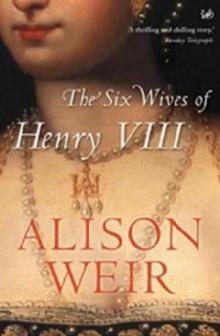 Six Wives of Henry VIII
Six Wives of Henry VIII Elizabeth of York: A Tudor Queen and Her World
Elizabeth of York: A Tudor Queen and Her World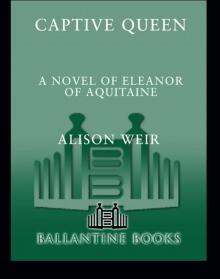 Captive Queen
Captive Queen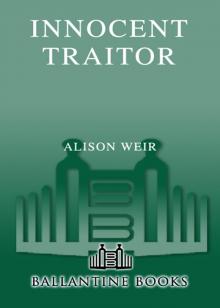 Innocent Traitor
Innocent Traitor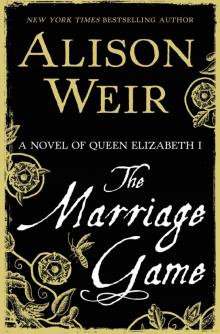 The Marriage Game
The Marriage Game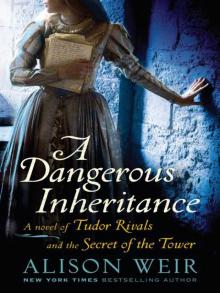 A Dangerous Inheritance
A Dangerous Inheritance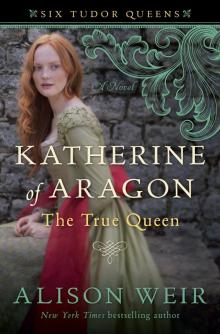 Katherine of Aragón: The True Queen
Katherine of Aragón: The True Queen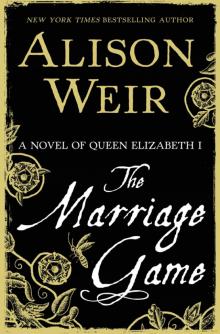 The Marriage Game: A Novel of Queen Elizabeth I
The Marriage Game: A Novel of Queen Elizabeth I Princes in the Tower
Princes in the Tower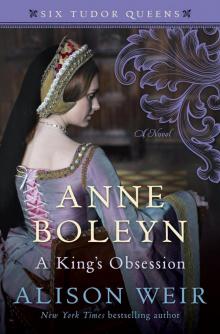 Anne Boleyn: A King's Obsession
Anne Boleyn: A King's Obsession Traitors of the Tower
Traitors of the Tower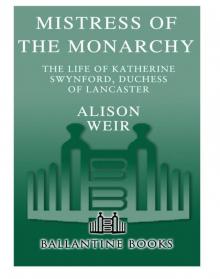 Mistress of the Monarchy: The Life of Katherine Swynford, Duchess of Lancaster
Mistress of the Monarchy: The Life of Katherine Swynford, Duchess of Lancaster Queens of the Conquest: England’s Medieval Queens
Queens of the Conquest: England’s Medieval Queens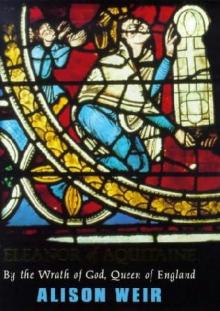 Eleanor of Aquitaine: A Life
Eleanor of Aquitaine: A Life Mary, Queen of Scots, and the Murder of Lord Darnley
Mary, Queen of Scots, and the Murder of Lord Darnley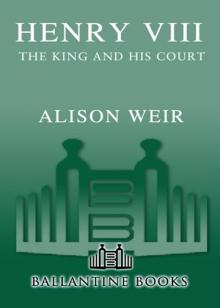 Henry VIII: The King and His Court
Henry VIII: The King and His Court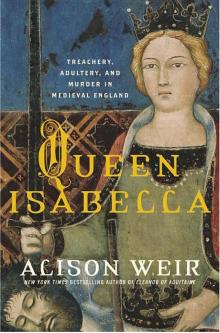 Queen Isabella: Treachery, Adultery, and Murder in Medieval England
Queen Isabella: Treachery, Adultery, and Murder in Medieval England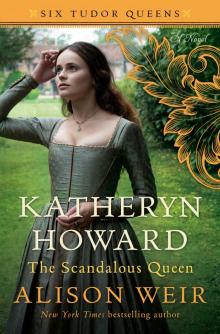 Katheryn Howard, the Scandalous Queen
Katheryn Howard, the Scandalous Queen Arthur- Prince of the Roses
Arthur- Prince of the Roses The Wars of the Roses
The Wars of the Roses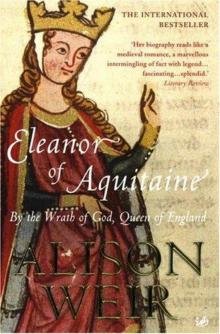 Eleanor of Aquitaine: By the Wrath of God, Queen of England
Eleanor of Aquitaine: By the Wrath of God, Queen of England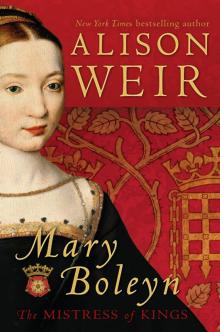 Mary Boleyn: The Great and Infamous Whore
Mary Boleyn: The Great and Infamous Whore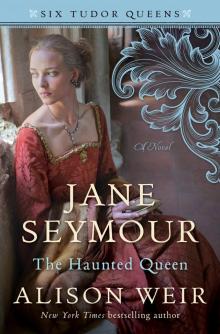 Jane Seymour: The Haunted Queen
Jane Seymour: The Haunted Queen Anna of Kleve, the Princess in the Portrait
Anna of Kleve, the Princess in the Portrait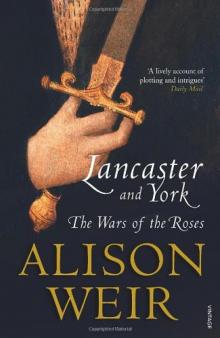 Lancaster and York: The Wars of the Roses
Lancaster and York: The Wars of the Roses The Grandmother's Tale
The Grandmother's Tale The Princess of Scotland (Six Tudor Queens #5.5)
The Princess of Scotland (Six Tudor Queens #5.5)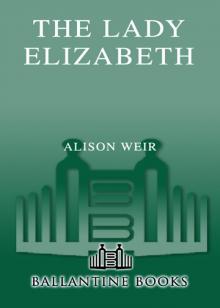 The Lady Elizabeth
The Lady Elizabeth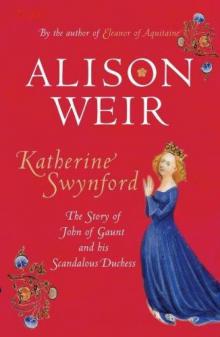 Katherine Swynford: The Story of John of Gaunt and His Scandalous Duchess
Katherine Swynford: The Story of John of Gaunt and His Scandalous Duchess The Curse of the Hungerfords
The Curse of the Hungerfords The Lost Tudor Princess: The Life of Lady Margaret Douglas
The Lost Tudor Princess: The Life of Lady Margaret Douglas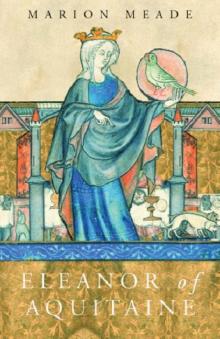 Eleanor of Aquitaine
Eleanor of Aquitaine Mistress of the Monarchy
Mistress of the Monarchy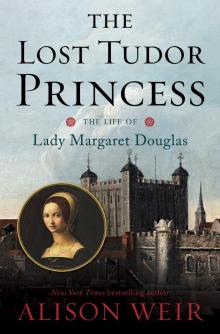 The Lost Tudor Princess
The Lost Tudor Princess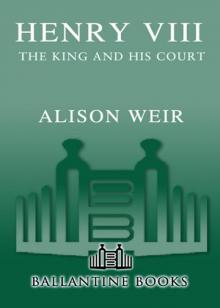 Henry VIII
Henry VIII Anne Boleyn, a King's Obsession
Anne Boleyn, a King's Obsession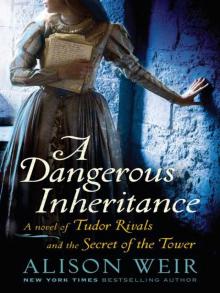 A Dangerous Inheritance: A Novel of Tudor Rivals and the Secret of the Tower
A Dangerous Inheritance: A Novel of Tudor Rivals and the Secret of the Tower Elizabeth of York
Elizabeth of York Katherine of Aragon, the True Queen
Katherine of Aragon, the True Queen Katherine Swynford
Katherine Swynford Wars of the Roses
Wars of the Roses Queens of the Conquest
Queens of the Conquest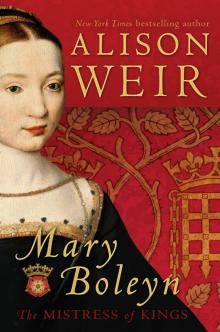 Mary Boleyn
Mary Boleyn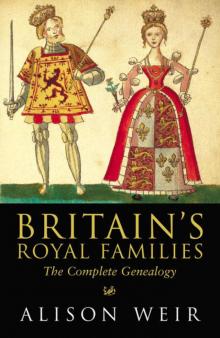 Britain's Royal Families
Britain's Royal Families The Tower Is Full of Ghosts Today
The Tower Is Full of Ghosts Today Life of Elizabeth I
Life of Elizabeth I Anne Boleyn A King's Obssession
Anne Boleyn A King's Obssession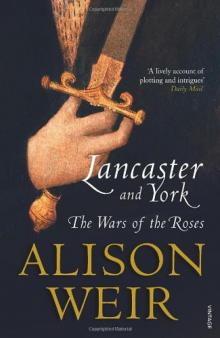 Lancaster and York
Lancaster and York Jane Seymour, the Haunted Queen
Jane Seymour, the Haunted Queen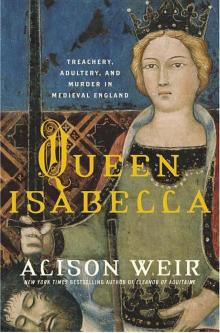 Queen Isabella
Queen Isabella The princes in the tower
The princes in the tower